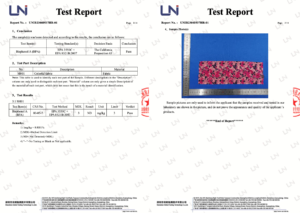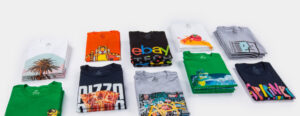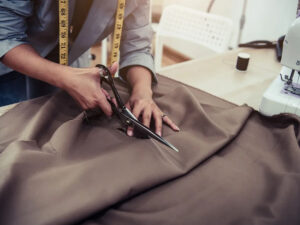
The Garment Manufacturing Process: A Step-by-Step Guide
If you want to get into the clothing business, check out this guide to the clothing manufacturing process that may help you.
Introduce
The garment manufacturing process includes multiple steps. All the processes are usually done in different departments because it is a continuous process from selecting fabrics, designing, proofing, making, finishing, checking, packing, etc. For a large brand with many resources, production time may only take a few weeks, while for a smaller brand it may take longer due to limited resources.
In this article, we will take you through the garment manufacturing process divided into four main stages.Stage One: Preparation
The first step in the garment manufacturing process; is preparation. If you are confused about where to start, start by planning your concept and sketching your product, you have to confirm whether you want a t-shirt or a skirt. You need to develop solid strategic plans, analyze the market, understand your target customers and meet their needs. During the preparation phase, you may spend a lot of time brainstorming and drafting concepts, depending on the garment you want to make, which is the foundation of the house.
sketching and drawing
Before launching your clothing line, you must draw products that capture the mood, color, and silhouette of the garment. It doesn’t matter whether you’re a paper sketcher or a digital person, because at the end of the day, the final output is what matters.
With concepts and sketches finalized, you’ll be one step closer to pre-production of the garment manufacturing process.
For your supplier, the sketch is very effective, you can not have a clear tech pack, at least your sketch can tell the supplier what product you want, and the initial effect you want to achieve.
Find the right clothing manufacturer
Find the right clothing manufacturer
In order to create the perfect garment for your clothing collection, you need to find the right clothing manufacturer, the factory that produces the clothing. You must provide the manufacturer with the design and all necessary specifications such as materials, dimensions, finishes, etc. As a client, you need to understand that the more detailed information you can provide, the more proactive you will be and the more professional you will be able to show.
Stage Two: Sample Making
Once your plan is finalized and all sketches are complete, it’s time to start the pre-prototyping phase. This stage of the garment manufacturing process involves fabric development, pattern making and grading, and proofing!
Fabric development
While finalizing the design is important, finding the right fabric during pre-production is also essential. The fabric you choose will affect the overall cost of the garment manufacturing process. In general, professional factories will give you advice on fabrics. For example, T-shirts are suitable for jersey, and Polo shirts are suitable for PK. Of course, there is no right answer to this, everything is possible, everything can be tried. Apart from that, it will also decide which sewing machine you need and which experienced factories to work with, many international factories in Asia are competitive in garment production.
Pattern making and grading
Patterns can make or break your designs, so you need a skilled and experienced pattern maker. These patterns will be used as templates throughout the cutting process, which will be the final garment output. Therefore, you need to make sure that the manufacturing plant can cut your fabric as precisely as possible.
For the factory it would be great if you could provide a detailed size chart.
After you have the final output of the cut fabric, you need to go through the pattern grading process. This process takes patterns from your clothing line and scales the designs to various sizes. Pattern grading is inevitable when you want to start a clothing business from scratch.
Stage 3: Production
This stage of the garment manufacturing process requires a high level of attention from you and your manufacturer to ensure quality control. During the production phase, you will complete product sampling and create safety documentation. During production, I suggest following up the production situation in three stages. First, before production, inspect the quality of fabrics and accessories. In the second stage, the quality of semi-finished products and the sewing process are inspected. Third, the finished product is inspected for size and workmanship.
Create a Safe Document of Your Manufacturing Information
When you’re finally content with the quality of the sample, you have to put all the needed details into a spreadsheet as your clothing line’s blueprint. The document will contain all the necessary details to reproduce your garments, including patterns, measurements, textiles, hardware details, and each cost of the garments manufacturing process.
To avoid starting all over again, this process is essential for the beginning of your clothing line.
Manufacturing and Quality Control
Almost there, you are almost at the end of the garments manufacturing process. Before you ship your garments, you need to do a quality control process of your clothing line’s first batch. This process is needed to catch and fix errors, so you need to pay complete attention to the stitches and embellishment, including small details like the labels and buttons.
Shipment
After all the products have been reviewed by the factory and you, as the client, all the remaining batches will be produced and shipped to you in no time.






